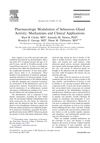Search
forLearn
3 / 3 resultslearn Verteporfin
chemical that might completely regrow follicles from hair transplant extractions
learn Hair Multiplication
extract, clone, and reinsert your own hair cells
Research
5 / 1000+ resultsresearch The Role of Sebaceous Gland Activity and Scalp Microfloral Metabolism in the Etiology of Seborrheic Dermatitis and Dandruff
Dandruff and seborrheic dermatitis are caused by yeast feeding on scalp oils, leading to irritation and flaking.
research Local Stimulation of Sebaceous Gland Activity by the Topical Administration of Dehydroepiandrosterone
Topical DHEA safely increases skin oil production.

research Pharmacologic Modulation of Sebaceous Gland Activity: Mechanisms and Clinical Applications
The document concludes that new treatments are needed to better manage acne and reduce side effects related to current therapies.
research Sebaceous Glands Changes Following Topical Application of Citral
Citral increases sebaceous gland activity in male rats.
research The Effect of Topically Applied Gamma-Oryzanol on Sebaceous Glands
γ‐Oryzanol ointment increases sebaceous gland activity and sebum production.
Community Join
5 / 92 resultscommunity Hot weather causing hair shedding?
Hot weather can increase hair shedding, possibly due to dehydration and active sebaceous glands. Using shampoos with salicylic acid or zinc pyrithione may help; daily anti-inflammatory use is not recommended.
community Why does Finasteride make my hair not get greasy fast anymore?
Finasteride, a hair loss treatment, was observed to reduce scalp oiliness in users. Anti-androgens like Finasteride are known to decrease the activity of oil-producing glands.
community Androgenetic alopecia is a skin disease: DHT-mediated skin disorders
Dihydrotestosterone (DHT) impacts various skin conditions, including Androgenetic alopecia and seborrheic dermatitis, by causing overactivity in sebaceous glands. Topical medications Tacrolimus and Clobetasol can reduce these inflammatory conditions, and treatments like RU58841, Minoxidil, and Finasteride may also be beneficial.
community How many of you guys have taken accutane?
Accutane may accelerate hair loss in genetically predisposed individuals by affecting enzymes related to DHT metabolism. Some users report hair loss after taking Accutane, while others use treatments like finasteride and minoxidil to manage hair loss.
community Finasteride gives me seb derm. Thoughts on zinc or other options?
A user with diffuse hair loss after taking accutane, which might have triggered genetic predisposition to AGA; their experience taking finasteride and experiencing side effects of increased oil production, increased sex drive, worsening hair texture; they are considering zinc supplementation with finasteride or other treatments such as alfatradiol or spironolactone.